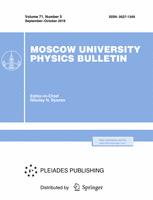Обсуждаются результаты теоретических и экспериментальных исследований, цель которых — обоснование потенциальных возможностей векторно-фазовых методов при решении различных при- кладных задач гидроакустики. Эти исследования во многом способствовали активному внедрению векторно-фазовых методов в практику гидроакустических измерений. Преимущества векторно-фазовых методов, особенно в гидроакустике, проявляются прежде всего при существенном ограничении области пространства для размещения их в среде. В случае размещения одиночного комбинирован- ного приемного модуля (КПМ) имеет место качественный скачок, который состоит в появлении ново- го «качества» у точечной приемной системы — возможности определения местоположения источника звука. Другая особенность использования КПМ — возможность применения принципиально новых (по отношению к системам на базе гидрофонов) алгоритмов обработки информации, основанных на прямом измерении потока акустической энергии (мощности), т. е. выделении той ее части, которая обусловлена анизотропией поля или наличием в среде сосредоточенных источников.
43.28.Tc Sound-in-air measurements, methods and instrumentation for location, navigation, altimetry, and sound ranging
43.58.Fm Sound level meters, level recorders, sound pressure, particle velocity, and sound intensity measurements, meters, and controllers
$^1$Московский государственный университет имени М.В. Ломоносова, физический факультет, кафедра акустики. Россия, 119991, Москва, Ленинские горы, д. 1, стр. 2
$^2$ФГУП ВНИИ физико-технических и радиотехнических измерений. Россия, 141570, Московская обл., Солнечногорский р-н, п/о Менделеево



